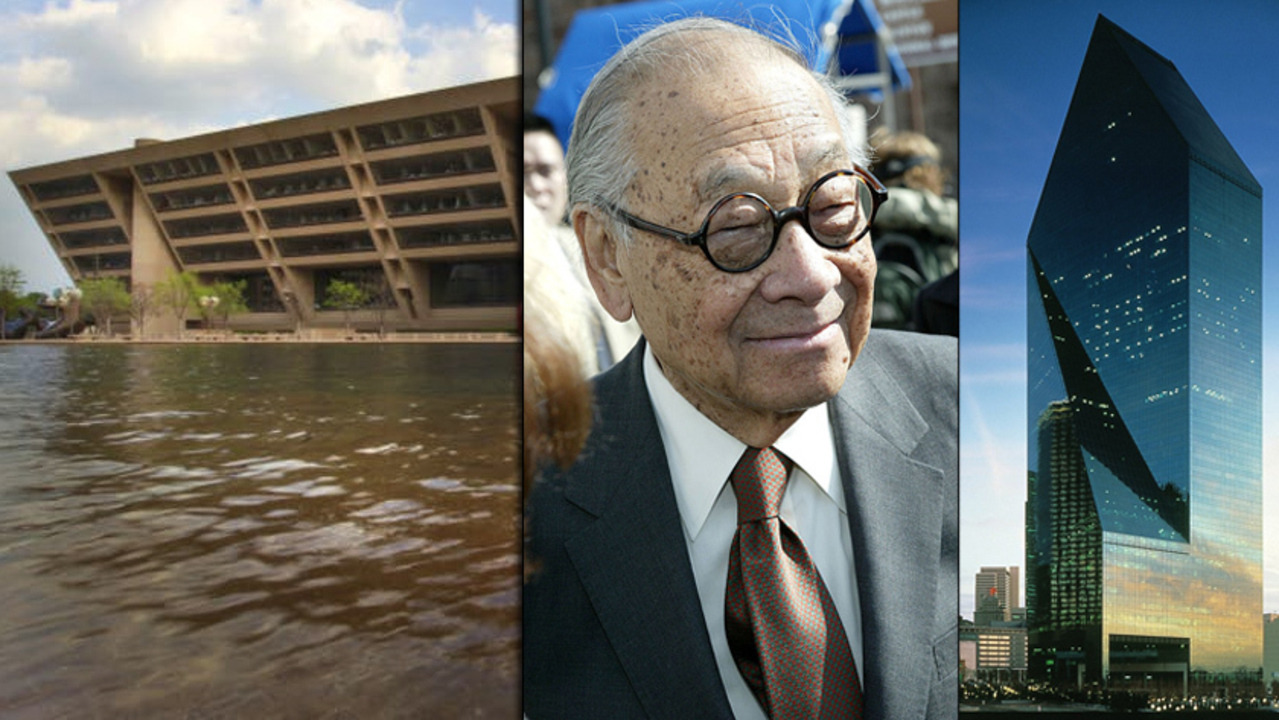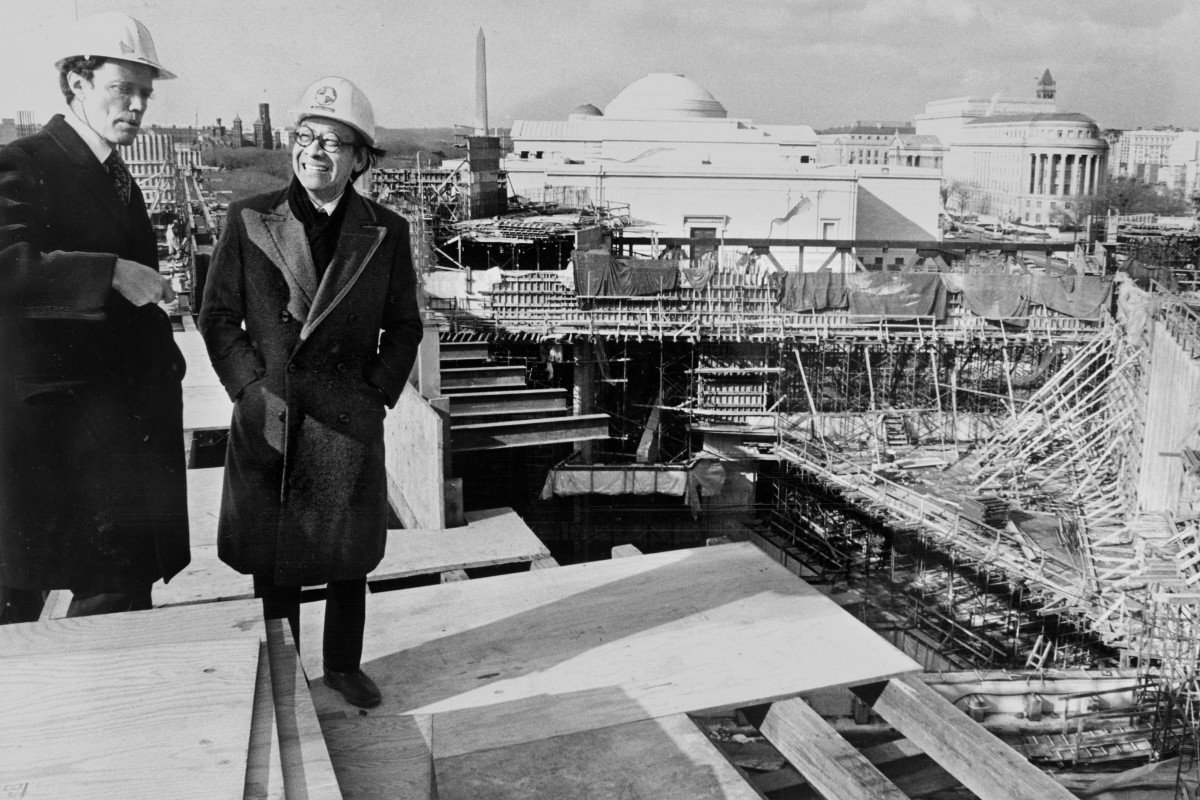Ieoh Ming Pei
(26 April 1917 - 15 May 2019)


Architect I.M.
Pei died at the age of 102
He will be remembered for his contribution
to the history of art and architecture, especially through these
museums:
- Everson Museum of Art, Syracuse, USA, 1968 (source)
- Paul Mellon Arts Center, Wallingford, USA, 1972 (source)
- Herbert F. Johnson Museum of Art, Ithaca, USA, 1973 (source)
- National Gallery of Art, Washington, USA, 1978 (source)
- Louvre Museum, Paris, France, 1989 (source)
- Miho Museum, Kyoto, Japan, 1997 (source)
- Grand Duke Jean Museum of Modern Art, Luxembourg, 2006 (source)
- Suzhou Museum, Suzhou, China, 2006 (source)
- Museum of Islamic Art, Doha, Qatar, 2008 (source)
2017 Twenty-five Year Award:
Grand Louvre - Phase I
Ieoh Ming Pei’s architecture can be characterized by its faith in modernism, humanized by its subtlety, lyricism, and beauty. Pei was born in Canton China in 1917 and came to the United States in 1935 to study first at the University of Pennsylvania and then at the Massachusetts Institute of Technology (B. Arch. 1940) and the Harvard Graduate School of Design (M. Arch. 1946). In 1948, he accepted the newly created post of Director of Architecture at Webb & Knapp, Inc., the real estate development firm, and this association resulted in major architectural and planning projects in Chicago, Philadelphia, Washington, Pittsburgh and other cities. In 1955, he formed the partnership of I.M. Pei & Associates, which became I.M. Pei & Partners in 1966. The partnership received the 1968 Architectural Firm Award of The American Institute of Architects. In 1989, the firm was renamed Pei Cobb Freed and Partners.
 Pei has designed over fifty projects in this country and abroad, many of which have been award winners. Two of his most prominent commissions have included the East Building of the National Gallery of Art (1978), in Washington, D.C., and the extension of the Louvre in Paris, France. The need to modernize and expand the Louvre, while respecting its history and architecture, led to the centrally located glass pyramid which forms the new main entrance and provides direct access to galleries in each of the museum's three wings. The pyramid also serves as a skylight for a very large expansion building constructed under the courtyard which provides all public amenities and technical support for the museum.
Pei has designed over fifty projects in this country and abroad, many of which have been award winners. Two of his most prominent commissions have included the East Building of the National Gallery of Art (1978), in Washington, D.C., and the extension of the Louvre in Paris, France. The need to modernize and expand the Louvre, while respecting its history and architecture, led to the centrally located glass pyramid which forms the new main entrance and provides direct access to galleries in each of the museum's three wings. The pyramid also serves as a skylight for a very large expansion building constructed under the courtyard which provides all public amenities and technical support for the museum.






Other outstanding examples of his work include: the Bank of China in Hong Kong (1989), the John Fitzgerald Kennedy Library (1979) near Boston, The Morton H. Meyerson Symphony Center (1989) in Dallas, Texas; the Society Hill development in Philadelphia, Pennsylvania, completed in 1964; the Overseas Chinese Banking Corporation Centre (1976), the West Wing and renovation of the Museum of Fine Arts in Boston (1981 and 1986); the Fragrant Hill Hotel (1982) near Beijing, China; Creative Artists Agency Headquarters (1989) in Beverly Hills, California; an IBM Office Complex (1989) in Somers, NY and another in Purchase, NY; the Everson Museum of Art (1968), Syracuse, New York; and the Texas Commerce Tower (1982) in Houston.
He has designed arts facilities and university buildings on the campuses of the Massachusetts Institute of Technology, the University of Rochester, Cornell University, Syracuse University, New York University and the University of Hawaii.
As a student, he was awarded the MIT Traveling Fellowship, and the Wheelwright Traveling Fellowship at Harvard. His subsequent honors include the following: the Brunner Prize in Architecture from the National institute of Art and Letters (1961); the Medal of Honor of the New York Chapter of the American Institute of Architects (1963), the Thomas Jefferson Memorial Medal for Architecture (1976), the Gold Medal for Architecture of the American Academy of Arts and Letters (1979), the Gold Medal of The American Institute of Architects (1979), and the Gold Medal of the French Académie d'Architecture (1981).
He has designed arts facilities and university buildings on the campuses of the Massachusetts Institute of Technology, the University of Rochester, Cornell University, Syracuse University, New York University and the University of Hawaii.
As a student, he was awarded the MIT Traveling Fellowship, and the Wheelwright Traveling Fellowship at Harvard. His subsequent honors include the following: the Brunner Prize in Architecture from the National institute of Art and Letters (1961); the Medal of Honor of the New York Chapter of the American Institute of Architects (1963), the Thomas Jefferson Memorial Medal for Architecture (1976), the Gold Medal for Architecture of the American Academy of Arts and Letters (1979), the Gold Medal of The American Institute of Architects (1979), and the Gold Medal of the French Académie d'Architecture (1981).




No comments:
Post a Comment